Screen
Simply speaking, the S7’s IPS 1080p screen is
one of the cutest laptop screens we've seen in a long time, with the type of
display that can put the other laptops to shame. You may think that 1,366x768
is enough for a 13-inch screen and you're right but once you use the S7, it's
hard to go back to any others. Everything from the desktop to the Windows 8 apps
is substantially fresh. The color reproduction is very good: black to black,
white to white and vivid colors that do not look saturated like in cartoons.
Finally, the IPS screen creates a good viewing angle. We cannot promise you
will not encounter glare screen (after all, this is the glossy screen), but you
will be able to work with the laptop indoors and do not have to worry about
adjusting the screen angle. If you intend to have a Netflix party, the screen
is easy to see, the color still looks strong even at extreme angles of
deviation.
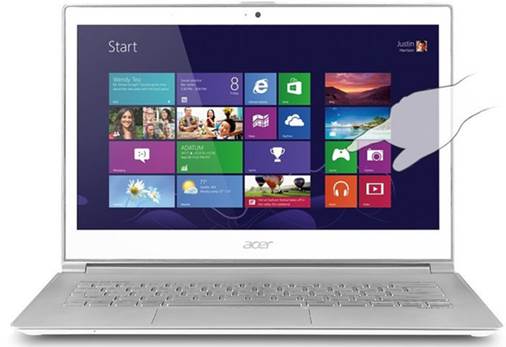
The
S7’s IPS 1080p screen is one of the cutest laptop screens we've seen in a long
time.
As you surely have noticed, this is not the
type of a Windows 8 PC that you can use in tablet mode, although this does not
mean that it cannot rotate: the screen on the 13-inch model can be pushed back,
so the whole system will be lying horizontally. We admit we are not sure when
you would use it in this way, in addition to the occasional board games or
drawing applications, but it is an interesting trick.
Performance and battery life
Acer Aspire S7 (Core i7-3517U 1.9GHz,
Intel HD 4000)
·
PCMark07: 5,011
·
3DMark06: 4,918
·
3DMark11: E1035/P620/X208
·
ATTO (top disk speed): 934MB/s (read); 686MB/s
(write)
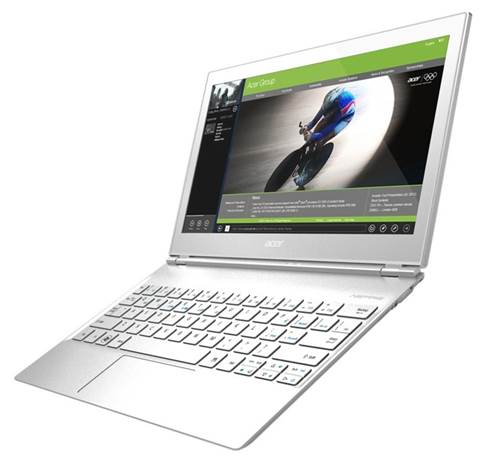
Acer
Aspire S7
Lenovo IdeaPad
Yoga 13 (Core i5-3317U 1.7GHz, Intel HD 4000)
·
PCMark07: 4,422
·
3DMark06: 4,415
·
3DMark11: E917/P572
·
ATTO (top disk speed): 278MB/s (read); 263MB/s
(write)
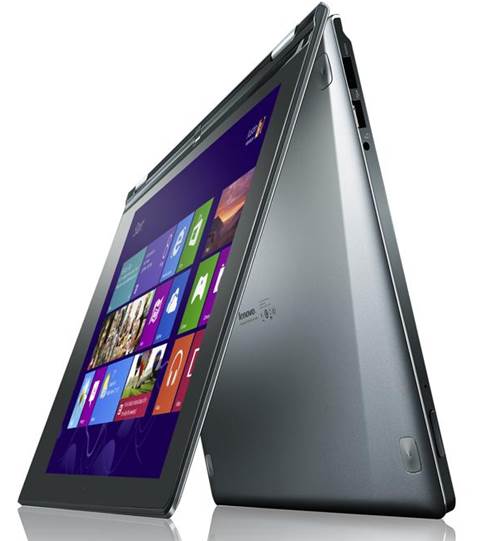
Lenovo
IdeaPad Yoga 13
Toshiba
Satellite U925t (Core i5-3317U 1.7GHz, Intel HD 4000)
·
PCMark07: 4,381
·
3DMark06: 4,210
·
3DMark11: E989/P563
·
ATTO (top disk speed): 521MB/s (read); 265MB/s
(write)
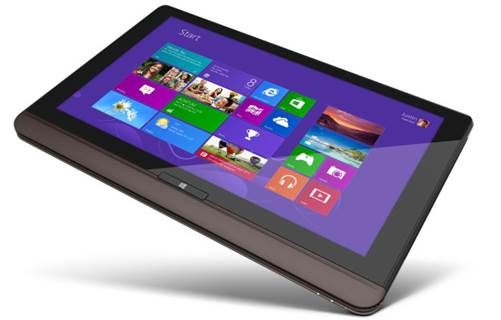
Toshiba
Satellite U925t
Dell XPS 12
(Core i5-3317U 1.7GHz, Intel HD 4000)
·
PCMark07: 4,673
·
3DMark06: 4,520
·
3DMark11: N/A
·
ATTO (top disk speed): 516MB/s (read); 263MB/s
(write)
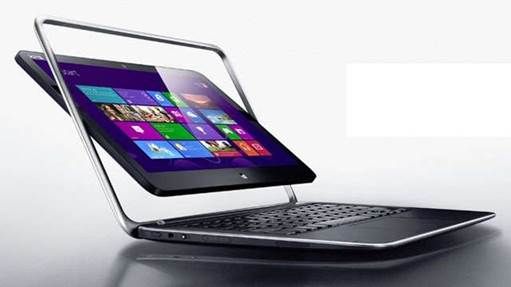
Dell
XPS 12
"The big
noise" It is a note I wrote to myself in the performance section of this
review, in which I still collected impressions and felt the need to leave a
placeholder. In some aspects, it would be weirs to start this section without
the discussion of the speeds and content, but once you get used to it, you cannot
stop to think about the fact that this $1,650 laptop has an Intel Core i7-3517U
1.9GHz. However, the fan noise will follow you everywhere. It would be a
slightly ironic saying that the computer starts "singing" during
gaming and other heavy graphics tasks; it becomes noisy even when mostly
running idle, or when you open a single application such as Maps.
It is too bad when the device becomes
noisy, which might cause distractions as underneath all this noise, it is a
powerful system, which operates incredibly impressively. As the previous Aspire
S5, the S7 has two SSDs that are arranged in RAID 0 setting, which allows
achieving high I/O speed. During the ATTO drive test, we found the highest read
speed of 934MB/s and the write speed of up to 686MB/s. A quick look at the
chart will show you that it surpassed any other high-end Windows 8 Ultrabooks we
have tested recently. The rest of the tests of PCMark and 3DMark – it is a
match with other rivals, and to be frank, a little bit better. It is the same
for the boot time: its cold boot in about 12 seconds, equal to, if not faster
than, that of the other computers on the market.
Acer announced the Aspire S7’s 4680mAh
battery could last 6 hours for a single charge, which is quite modest compared
to other Ultrabooks. In the video test, which is designed for heavy tasks, we
never approached that milestone. Even after several tests, the best result we could
get was 4 hours 18 minutes.
We were so taken aback by these scores that
we contacted Acer to exclude the possibility that we had received a useless
model. It turned out that Acer's own testing team had had about 5 hours of operation
in a separate check. Its battery life was longer than what we had seen here,
but the comparison of Acer tests with was not a direct one. It is interesting
that we noticed battery life was equal to what we had in the previous two Acer Ultrabooks,
the S3 and the S5.
In addition, even if our device lasted 5
hours, it still was not less than what we saw from other Windows 8Ultrabook,
such as Dell XPS 12 and Lenovo IdeaPad Yoga 13. Even these computers do not
last as long as other non-touch Ultrabooks we have tested. Running time here was
really quite bad, which is a big step backward. It was a pity: if it was not
for bad battery life, this would be a “best-seller” ultraportable.